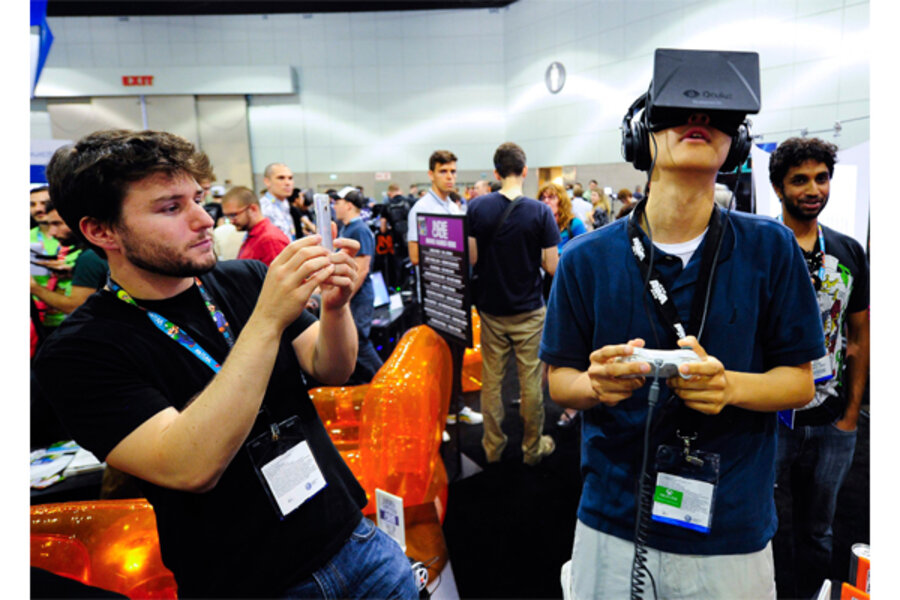Oculus Rift and Facebook: Virtual reality meets social networks
Loading...
What would a virtual reality social network look like? Facebook chief executive Mark Zuckerberg gave users a preview when he announced Tuesday night Facebook bought virtual reality headset maker Oculus VR for $2 billion.
“Imagine enjoying a courtside seat at a game, studying in a classroom of students and teachers all over the world or consulting with a doctor face-to-face -- just by putting on goggles in your home,” he wrote in a blog post.
“This is really a new communication platform,” he adds. “By feeling truly present, you can share unbounded spaces and experiences with the people in your life. Imagine sharing not just moments with your friends online, but entire experiences and adventures.”
With Facebook at the helm, this virtual reality acquisition raises some intriguing questions about the future of social networks, and how we experience and interact with the world. So what’s the story behind the virtual platform that will allow us to sit courtside at a basketball game (while really sitting on our couch)?
Though companies have made plenty of virtual reality headsets in the past, few have the advanced, immersive technology Oculus VR has developed. Their main headset, the Rift, is one of the only virtual reality headsets with motion-sensing ability that allows users to move their head in order to view more of the virtual world around them. Users strap oversized goggles on their head, and the screen inside displays 3-D, high-resolution images. Right now, its focus is video games.
Oculus’ most recent model has eliminated issues with motion sickness and lag time, common problems of virtual reality headsets (and key issues that must be overcome to be commercially successful).
So far, the Rift hasn’t been released commercially, and founder Palmer Luckey says it will be released “when it’s ready.” However, the company has sold about 75,000 to developers. In the meantime, Oculus isn’t the only company to make waves in the virtual reality world: Sony unveiled a prototype of its “Project Morpheus” 3-D virtual reality headset for Playstation 4 a few weeks ago. Google has been making headlines all year with various Google Glass developments.
Though Oculus’ technology is advanced, the company itself is quite young – only two years old. Mr. Luckey is 21 and originally developed the technology in his parents’ garage. Oculus was able to launch its first model with the help of an extremely successful Kickstarter campaign that raised more than $2 million in September 2012.
Facebook added three zeroes to that number when it dished out $2 billion for the 100-employee company, based in Irvine, Calif. Though a small sum compared to the $19 billion it recently paid for WhatsApp, the purchase is interesting for a few reasons. This is Facebook’s first hardware purchase, and first foray into the rapidly growing wearable tech industry. Oculus offers the social media company something priceless – a nascent technology with disruptive potential.
"The history of our industry is that every 10 or 15 years there's a new major computing platform, whether it's the PC, the Web or now mobile," Mr. Zuckerberg said in a conference call with analysts and media on Tuesday according to Reuters. "We're making a long-term bet that immersive, virtual, and augmented reality will become a part of people's daily life.”






